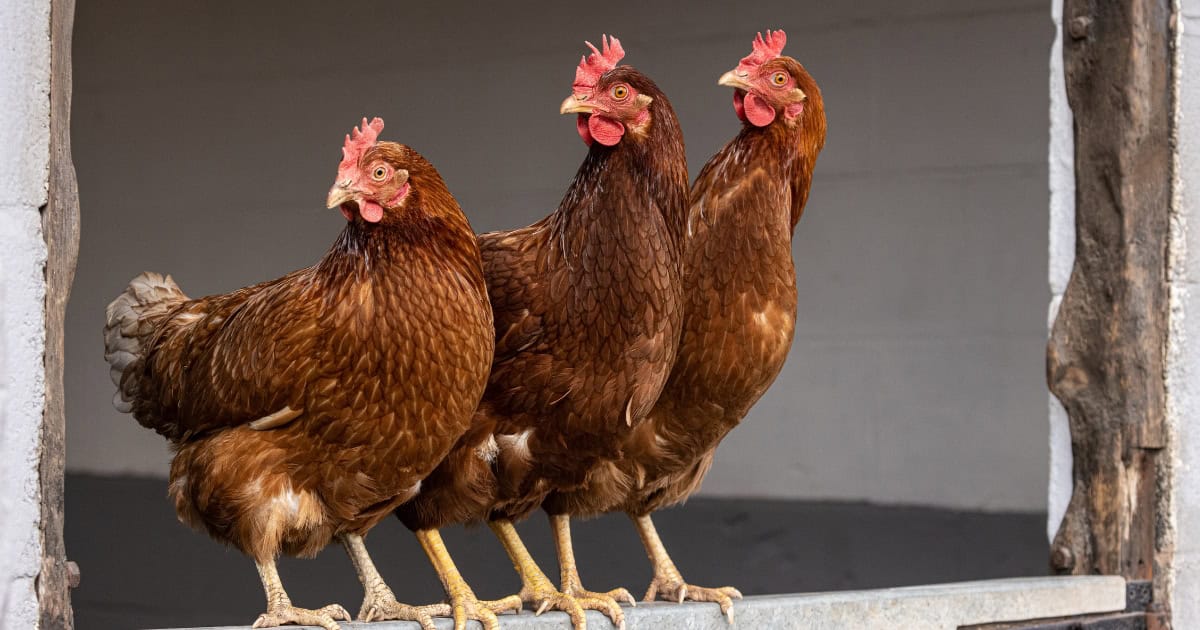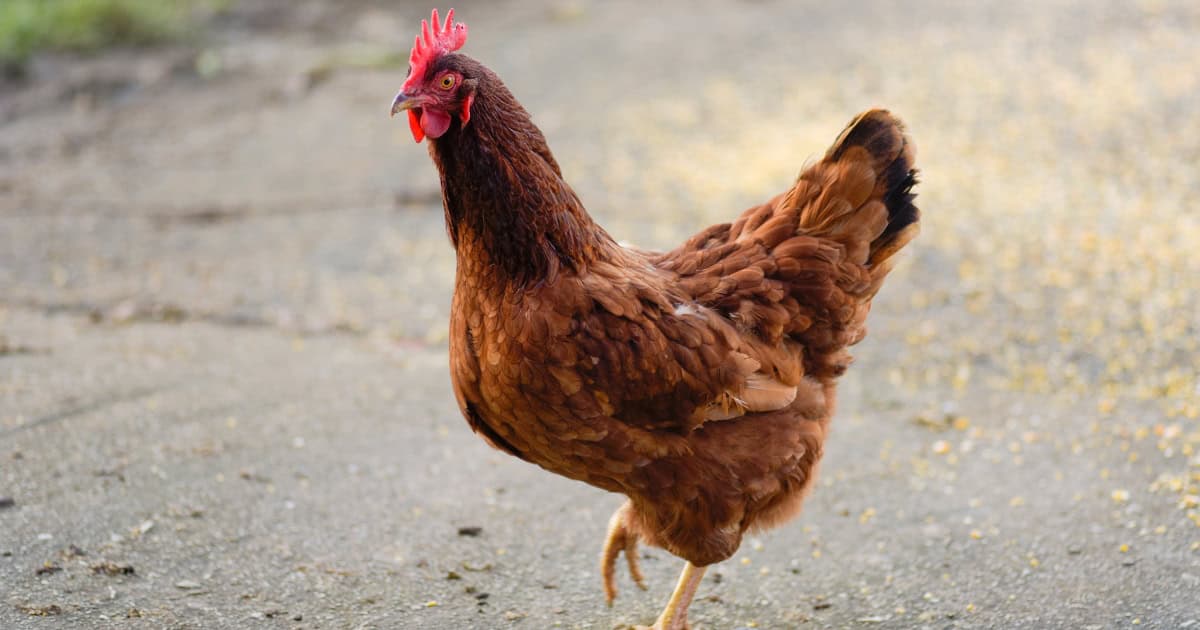Chickens
Rhode Island Red Hen: The Ultimate Backyard Chicken
Have you ever wondered about the charm of a Rhode Island Red Hen?
Known for their egg-laying prowess and rich history dating back to the late 19th century, they can produce up to 300 eggs annually.
It’s not just about eggs; Rhode Island Red hens have personality. Naturally curious, they are friendly yet assertive, they make any coop lively and full of character.
Join us as we explore the ultimate guide on Rhode Island Red hens.
Rhode Island Red Hens
As a poultry expert and backyard chicken enthusiast, I’ve had the pleasure of raising Rhode Island Reds for several years now, and I can confidently say that they are one of my favourite breeds.
History of the Rhode Island Red
The Rhode Island Red breed was developed in the late 19th century in the American state of Rhode Island. It was created by crossing Malay Game, Leghorn, and Brahma chickens to produce a dual-purpose bird that could provide both meat and eggs.
Fun fact: The Rhode Island Red is the official state bird of Rhode Island!
Characteristics of Rhode Island Reds
In terms of size, Rhode Island Reds are considered a large chicken breed with roosters typically weighing around 4 kilograms, while hens weigh about 3 kilograms. They have a rectangular, elongated body shape and a moderately long, broad back. One of the most striking features of Rhode Island Reds is their beautiful feathers.
Temperament of Rhode Island Red Hens
Rhode Island Red hens are known for being friendly, curious, and active birds.
In my experience, these hens are generally docile and get along well with other chickens in the flock. With proper handling and socialisation from a young age, Rhode Island Reds can make wonderful pets and additions to any backyard chicken coop.

Raising Rhode Island Red Chickens
Now that you know a bit more about the history and characteristics of Rhode Island Reds, let’s talk about what it takes to raise these beautiful birds in your own backyard.
As someone who has raised many Rhode Island Reds over the years, I can tell you that they are relatively easy to care for and make a great choice for both experienced and novice chicken keepers alike.
Feeding and Watering Rhode Island Red Hens
Proper nutrition is key to keeping your Rhode Island Red hens healthy and productive. I recommend using an automatic treadle feeder to ensure that your birds always have access to food, even when you’re not around.
In addition to their regular feed, I like to offer my hens a variety of fresh fruits and vegetables as treats. Just be sure not to overdo it with the treats, as they should only make up about 10% of your hens’ total diet.
When it comes to water, be sure to provide your hens with a clean, fresh supply at all times.
Health Considerations for Rhode Island Reds
While Rhode Island Reds are generally hardy and healthy birds, there are a few health issues to be aware of to ensure you have healthy backyard chickens. Regular dusting with a poultry-safe insecticide can help prevent infestations.
Make sure your backyard coop is kept clean with plenty of room to roam around and feed them well-balanced meals rich with nutrients daily.
Essential Tips On Setting Up a Coop for Rhode Island Reds
First and foremost, you’ll want to make sure that your coop provides plenty of space for your birds to move around and stretch their wings. A good rule of thumb is to provide at least 2-3 square feet of indoor space per bird, along with 4-5 square feet of outdoor run space.
Be sure to include roosting bars for your hens to perch on at night, as well as nesting boxes where they can lay their eggs.
We highly recommend the Connie chicken coop for 4 or 5 Rhode Island Reds that will be let out daily to exercise. It has 2 nesting spaces plus 2 perches – 1 higher and 1 lower.
Egg Production and the Rhode Island Red
One of the main reasons that Rhode Island Reds are so popular among backyard chicken keepers is their excellent egg-laying abilities.
Egg Laying Capabilities of Rhode Island Reds
Rhode Island Red hens typically lay brown eggs and start laying eggs at around 18-20 weeks of age and can continue to lay consistently for several years. In fact, some hens have been known to lay eggs well into their fourth or fifth year of life.
Factors Affecting Egg Production
While Rhode Island Reds are naturally good egg layers, like other chicken breeds there are a few factors that can affect their egg production. One of the most important is diet – hens need a balanced feed with plenty of protein and calcium to produce strong, healthy eggs.
Hens require a certain amount of daylight to stimulate good egg production, so it’s important to provide them with at least 14-16 hours of light per day. This can be achieved through natural daylight or by using artificial lighting in the coop.
Keeping happy hens is the key to a productive and enjoyable backyard flock.

Understanding the Physical Traits of Rhode Island Reds
One of the things that makes Rhode Island Reds so popular among backyard chicken keepers is their striking appearance.
Comb Types in Rhode Island Reds
Rhode Island Reds can have either a single comb or a rose comb, depending on the specific strain. Single combs are the most common and are characterized by a tall, upright comb with five to seven points.
Rose combs, on the other hand, are flatter and more compact, with a tapered spike at the back. In colder climates, rose combs are often preferred as they are less prone to frostbite than single combs.
Feather Colouration of Rhode Island Red Hens
The feather colouration of Rhode Island Red hens is one of their most distinctive features.
The neck and tail feathers of Rhode Island Reds are often rich dark red and slightly darker than the body feathers, while the undercolour is typically a lighter red or salmon hue.
Some hens may also have a small amount of black flecking in their plumage, which is considered acceptable according to breed standards.
Leg Colour and Other Distinguishing Features
In addition to their pretty plumage, Rhode Island Reds also have several other distinguishing physical features.
Rhode Island Reds typically have yellow legs, red earlobes, and wattles, and their eyes are a beautiful reddish-bay colour.

FAQ
What Makes the Rhode Island Red Hen Special?
The Rhode Island Red hen is renowned for its hardiness and prolific egg-laying abilities.
How Many Eggs Does a Rhode Island Red Hen Lay Annually?
A well-cared-for Rhode Island Red hen can lay between 250 to 300 eggs per year.
What Coloured Eggs Do Rhode Island Red Hen’s Lay?
Rhode Island Red Hens typically lay brown eggs.
Are They Suitable for Beginners?
Yes, they are! The hardy nature of the Rhode Island Reds means they can adapt easily to various climates and conditions.
Their calm temperament also makes them ideal for first-time pet owners who are keen on raising backyard chickens.
Ian’s Wrap
The Rhode Island Red Hen makes the perfect backyard flock. They’re hardy, friendly, and fantastic egg layers, making them a great choice whether you’re just starting or have been keeping chickens for years.
By getting to know their needs and quirks, you can help these hens thrive in any climate. Plus, they’re low-maintenance, so you can enjoy the benefits without too much hassle.
Adding Rhode Island Reds to your flock means fresh eggs and pleasant company right in your backyard!





